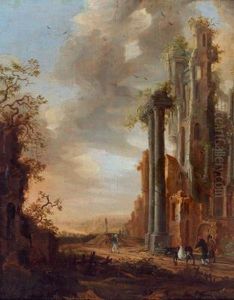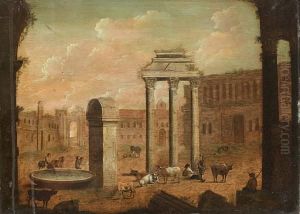David De Hooch Paintings
Pieter de Hooch, often incorrectly referred to as David de Hooch, was a Dutch Golden Age painter famous for his genre scenes and use of perspective and light. Born in 1629 in Rotterdam, Netherlands, not much is known about his early life. He is believed to have been a pupil of the landscape painter Nicolaes Berchem.
De Hooch moved to Delft by 1652, where he developed his distinctive style, portraying domestic interiors, courtyards, and city scenes with a remarkable attention to the effects of light and spatial organization. His work from this period often features complex architectural backgrounds and a sense of tranquility. His painting technique was meticulous and his compositions were carefully constructed, with a subtle use of color and light to create depth and realism.
By 1660, de Hooch moved to Amsterdam, where his work began to reflect the influence of the vibrant and prosperous environment. His paintings from this period depict more affluent interiors and demonstrate a greater emphasis on opulence and the depiction of fine materials and garments. De Hooch's work is often compared to that of his contemporary, Johannes Vermeer, due to similarities in subject matter and their masterly treatment of light and perspective.
Pieter de Hooch's contribution to Dutch genre painting was significant, and his works were highly prized in his own time. However, his last years were marked by obscurity, and he died in an asylum in Amsterdam in 1684. Despite this tragic end, de Hooch's work has continued to be celebrated for its quiet beauty and technical skill. His paintings are held in many major museums around the world, and he is considered one of the key figures of the Dutch Golden Age of painting.

